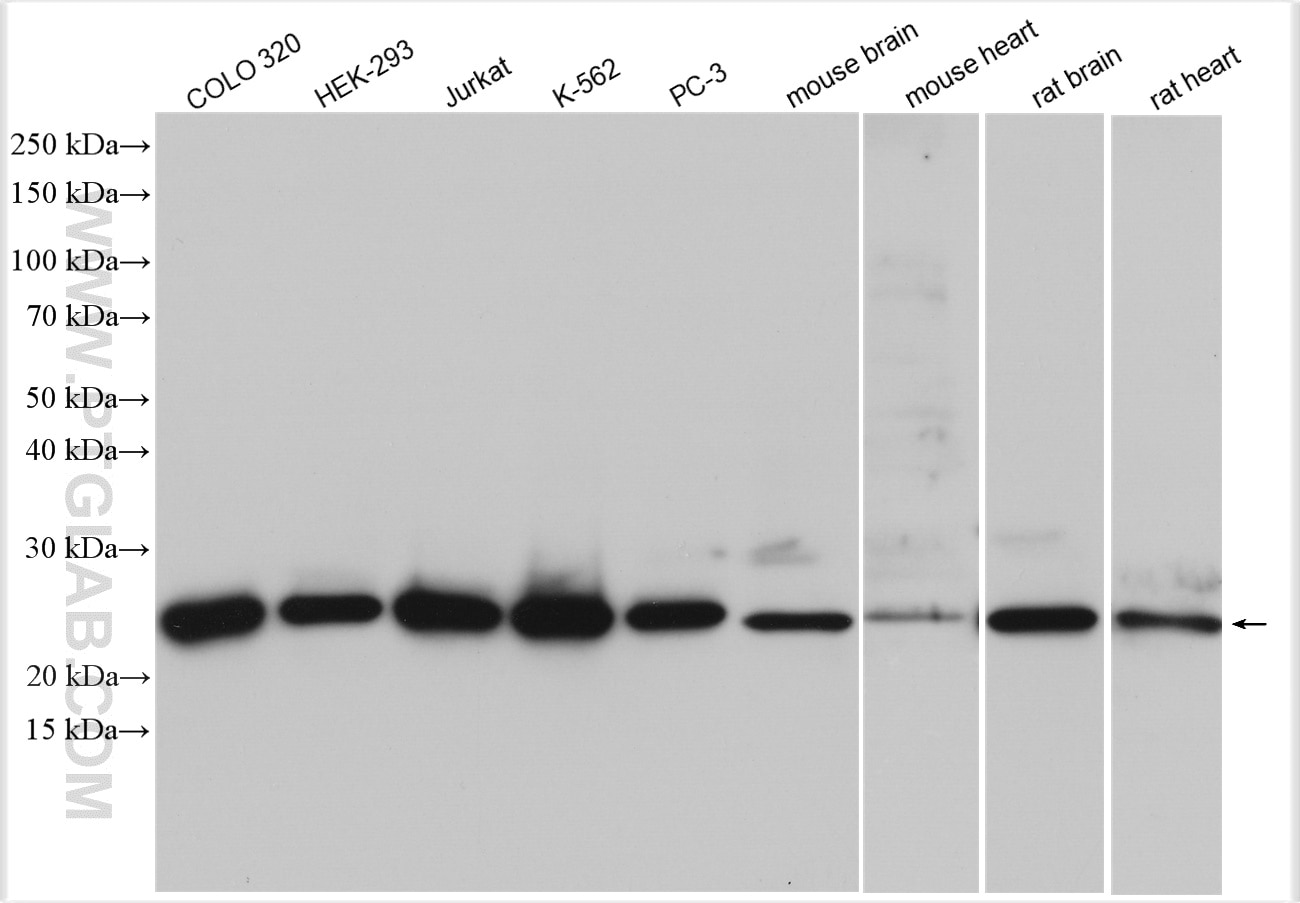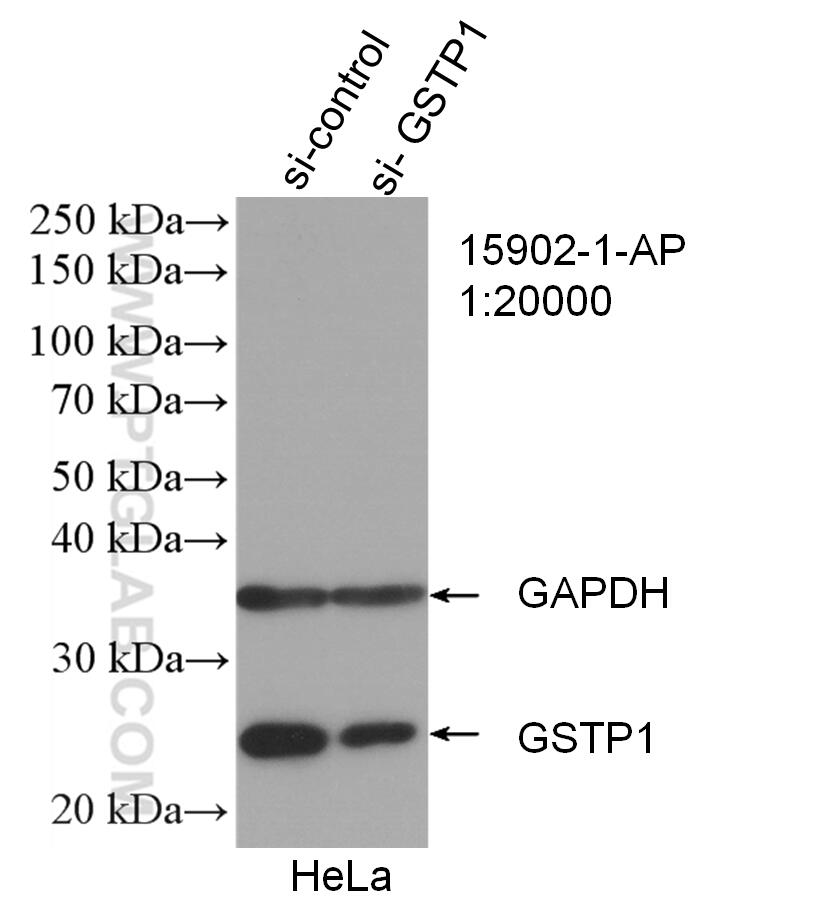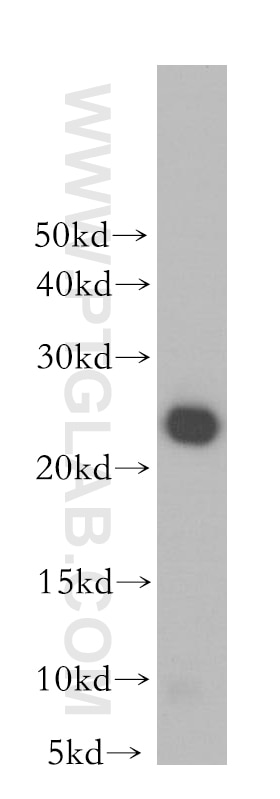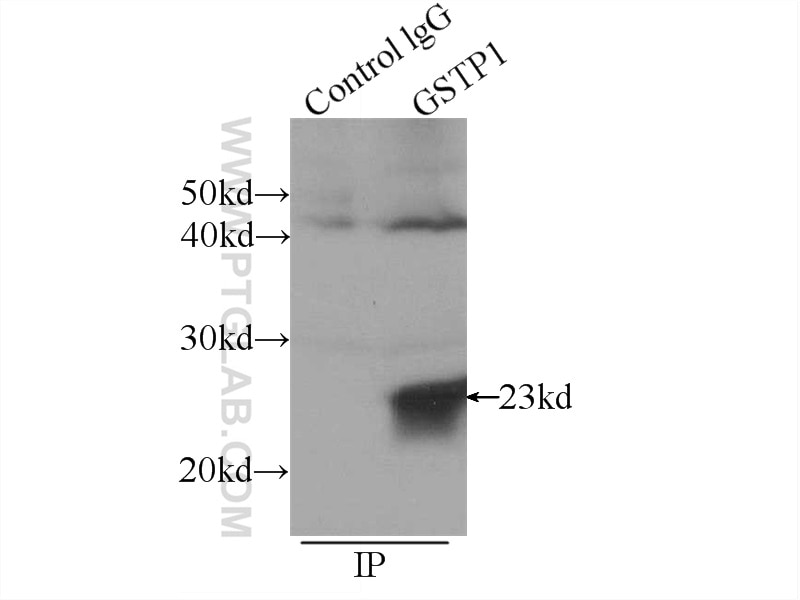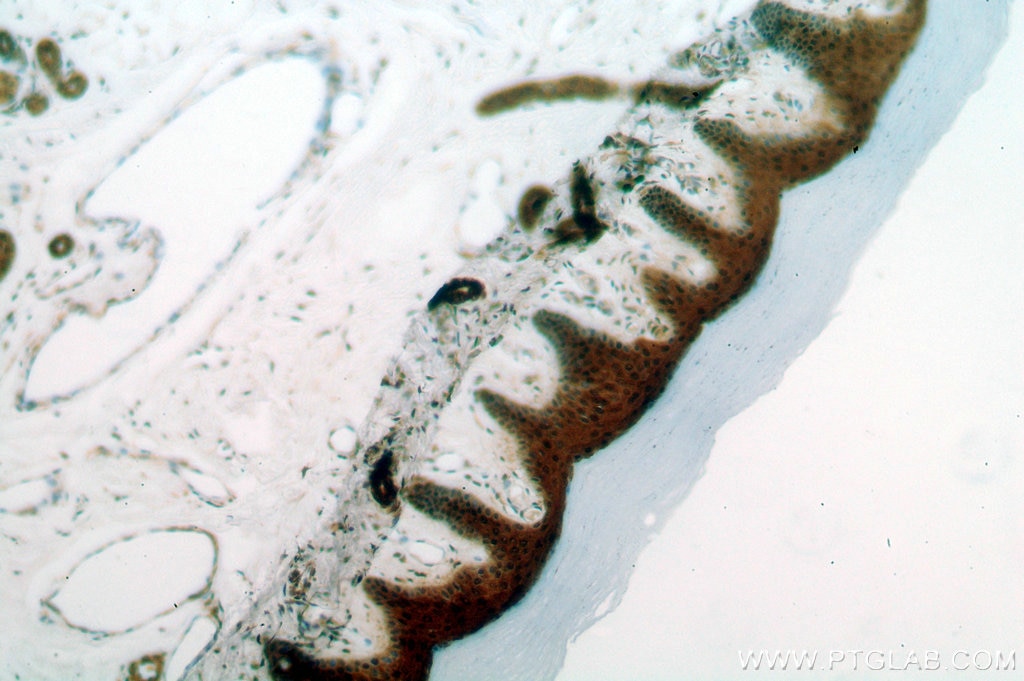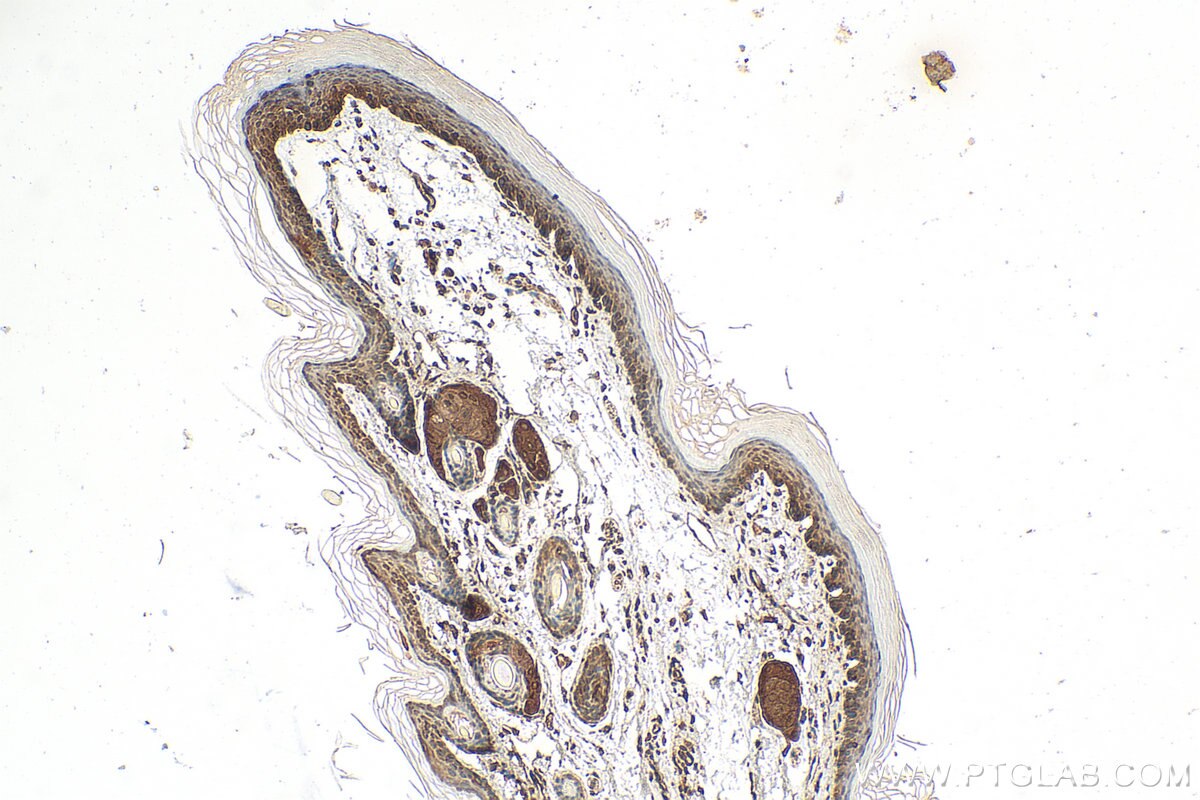- Featured Product
- KD/KO Validated
GSTP1 Polyklonaler Antikörper
GSTP1 Polyklonal Antikörper für WB, IHC, IF/ICC, FC (Intra), IP, ELISA
Wirt / Isotyp
Kaninchen / IgG
Getestete Reaktivität
human, Maus, Ratte
Anwendung
WB, IHC, IF/ICC, FC (Intra), IP, CoIP, ELISA
Konjugation
Unkonjugiert
Kat-Nr. : 15902-1-AP
Synonyme
Geprüfte Anwendungen
| Erfolgreiche Detektion in WB | COLO 320-Zellen, HEK-293-Zellen, HeLa-Zellen, humanes Hirngewebe, Jurkat-Zellen, K-562-Zellen, Maushirngewebe, Mausherzgewebe, PC-3-Zellen, Rattenhirngewebe, Rattenherzgewebe |
| Erfolgreiche IP | Maushirngewebe |
| Erfolgreiche Detektion in IHC | Maushautgewebe, humanes Lebergewebe, humanes Hautgewebe Hinweis: Antigendemaskierung mit TE-Puffer pH 9,0 empfohlen. (*) Wahlweise kann die Antigendemaskierung auch mit Citratpuffer pH 6,0 erfolgen. |
| Erfolgreiche Detektion in IF/ICC | HepG2-Zellen |
| Erfolgreiche Detektion in FC (Intra) | HepG2-Zellen |
Empfohlene Verdünnung
| Anwendung | Verdünnung |
|---|---|
| Western Blot (WB) | WB : 1:2000-1:16000 |
| Immunpräzipitation (IP) | IP : 0.5-4.0 ug for 1.0-3.0 mg of total protein lysate |
| Immunhistochemie (IHC) | IHC : 1:200-1:1600 |
| Immunfluoreszenz (IF)/ICC | IF/ICC : 1:50-1:500 |
| Durchflusszytometrie (FC) (INTRA) | FC (INTRA) : 0.40 ug per 10^6 cells in a 100 µl suspension |
| It is recommended that this reagent should be titrated in each testing system to obtain optimal results. | |
| Sample-dependent, check data in validation data gallery | |
Veröffentlichte Anwendungen
| KD/KO | See 2 publications below |
| WB | See 29 publications below |
| IHC | See 7 publications below |
| IF | See 7 publications below |
| IP | See 1 publications below |
| CoIP | See 1 publications below |
Produktinformation
15902-1-AP bindet in WB, IHC, IF/ICC, FC (Intra), IP, CoIP, ELISA GSTP1 und zeigt Reaktivität mit human, Maus, Ratten
| Getestete Reaktivität | human, Maus, Ratte |
| In Publikationen genannte Reaktivität | human, Maus, Ratte |
| Wirt / Isotyp | Kaninchen / IgG |
| Klonalität | Polyklonal |
| Typ | Antikörper |
| Immunogen | GSTP1 fusion protein Ag8731 |
| Vollständiger Name | glutathione S-transferase pi 1 |
| Berechnetes Molekulargewicht | 210 aa, 23 kDa |
| Beobachtetes Molekulargewicht | 23-28 kDa |
| GenBank-Zugangsnummer | BC010915 |
| Gene symbol | GSTP1 |
| Gene ID (NCBI) | 2950 |
| Konjugation | Unkonjugiert |
| Form | Liquid |
| Reinigungsmethode | Antigen-Affinitätsreinigung |
| Lagerungspuffer | PBS with 0.02% sodium azide and 50% glycerol |
| Lagerungsbedingungen | Bei -20°C lagern. Nach dem Versand ein Jahr lang stabil Aliquotieren ist bei -20oC Lagerung nicht notwendig. 20ul Größen enthalten 0,1% BSA. |
Hintergrundinformationen
Glutathione S-transferase Pi (GSTP1) is anisozyme encoded by the GST pi gene that plays an importantregulatory role in detoxification, anti‑oxidative damage, and the occurrence of various diseases (PMID: 14755684). GSTP1 conjugates reduced glutathione to a wide number of exogenous and endogenous hydrophobic electrophiles. It is involved in the formation of glutathione conjugates of both prostaglandin A2 (PGA2) and prostaglandin J2 (PGJ2) (PMID:9084911). GSTP1 methylation is frequently associated with tumor development or poor prognosis in a wide range of tumors such as neuroblastoma, hepatocellular carcinoma, endometrial, breast, and prostate cancers (PCa) (PMID: 27594734).
Protokolle
| PRODUKTSPEZIFISCHE PROTOKOLLE | |
|---|---|
| WB protocol for GSTP1 antibody 15902-1-AP | Protokoll herunterladen |
| IHC protocol for GSTP1 antibody 15902-1-AP | Protokoll herunterladenl |
| IF protocol for GSTP1 antibody 15902-1-AP | Protokoll herunterladen |
| IP protocol for GSTP1 antibody 15902-1-AP | Protokoll herunterladen |
| STANDARD-PROTOKOLLE | |
|---|---|
| Klicken Sie hier, um unsere Standardprotokolle anzuzeigen |
Publikationen
| Species | Application | Title |
|---|---|---|
Mol Cell SMURF2 predisposes cancer cell toward ferroptosis in GPX4-independent manners by promoting GSTP1 degradation
| ||
Redox Biol GSTP1-mediated S-glutathionylation of Pik3r1 is a redox hub that inhibits osteoclastogenesis through regulating autophagic flux
| ||
J Cell Biol TDP-43 mediates SREBF2-regulated gene expression required for oligodendrocyte myelination. | ||
Part Fibre Toxicol Protein target identification and toxicological mechanism investigation of silver nanoparticles-induced hepatotoxicity by integrating proteomic and metallomic strategies. | ||
Glia Developmental maturation and regional heterogeneity but no sexual dimorphism of the murine CNS myelin proteome | ||
Cell Death Dis Poly(ADP-ribosyl)ated PXR is a critical regulator of acetaminophen-induced hepatotoxicity. |
Rezensionen
The reviews below have been submitted by verified Proteintech customers who received an incentive for providing their feedback.
FH James (Verified Customer) (11-30-2022) | Works pretty well.
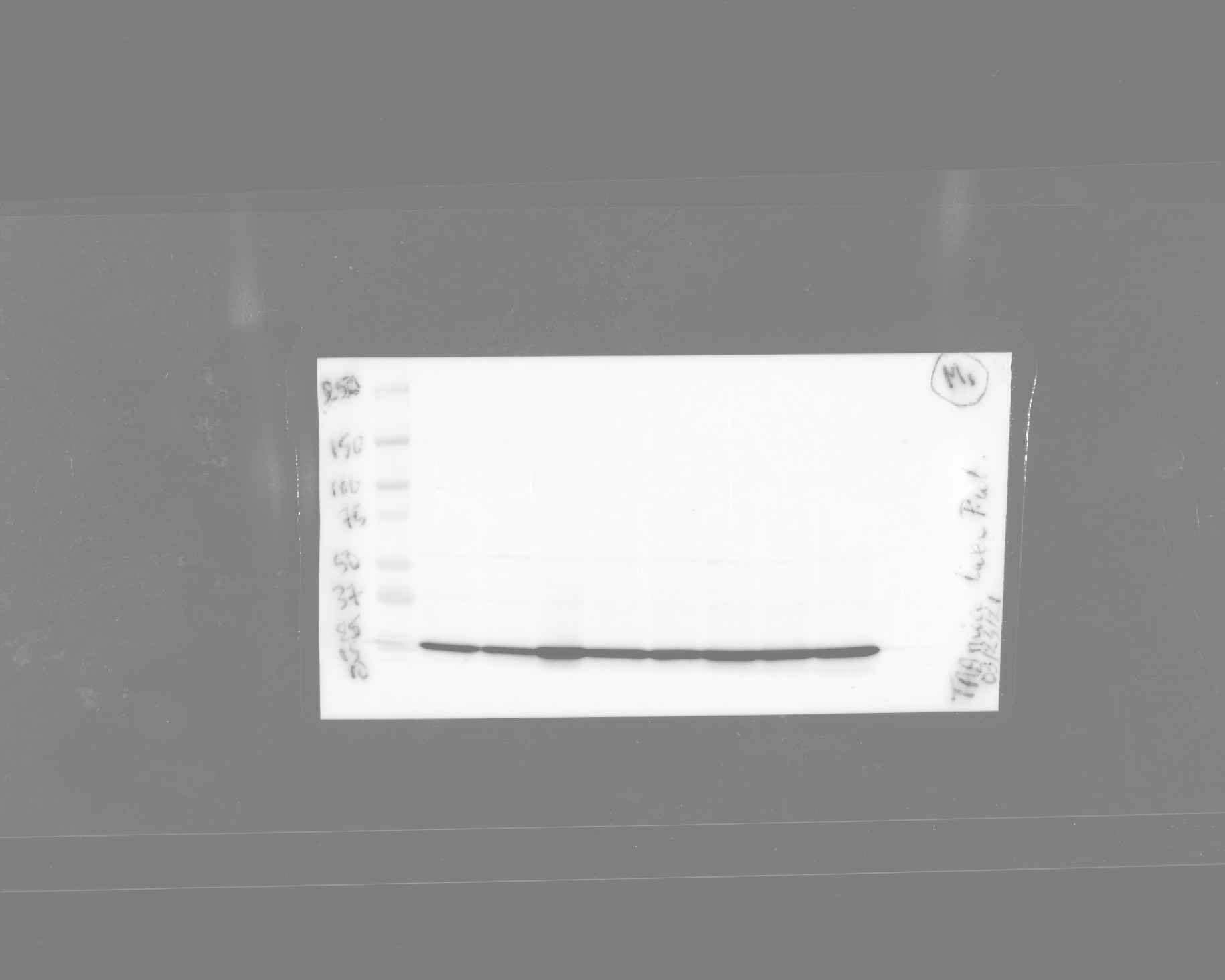 |
